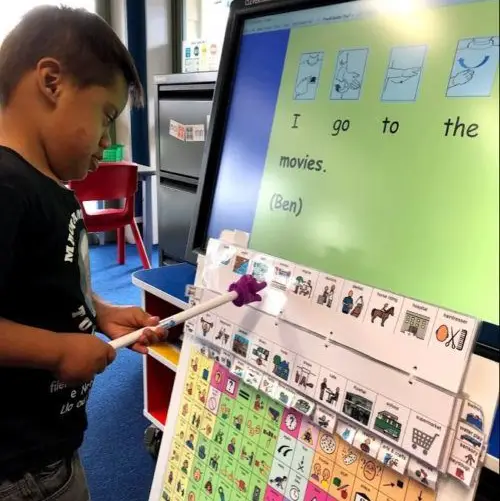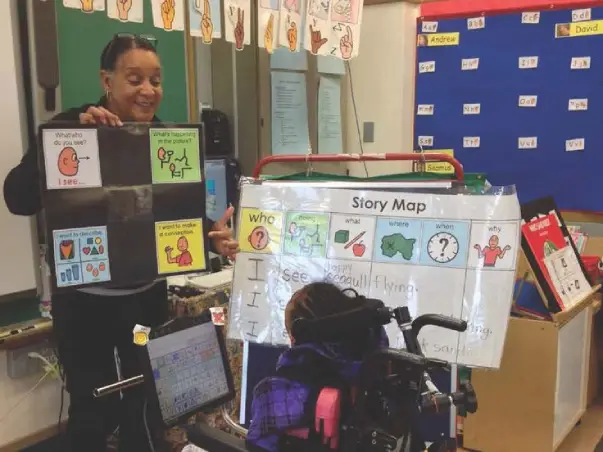
Augmentative and Alternative Communication (AAC) Training
- Home
- ABA Intervention
Augmentative and Alternative Communication (AAC) Training
Augmentative and Alternative Communication (AAC) Training: Empowering Communication for All Children

At YOU CAN, we specialize in AAC training to support children with speech and language challenges who are unable to communicate effectively through verbal speech. AAC systems offer an essential means of communication for children with autism, developmental delays, speech disorders, and other special needs. Through our personalized AAC training program, we empower children to communicate their needs, express themselves, and interact with others, providing them with the tools to thrive socially, academically, and emotionally.
What is AAC?
Augmentative and Alternative Communication (AAC) refers to any communication method that supplements or replaces speech for individuals who have difficulty speaking or understanding verbal language. AAC includes both low-tech and high-tech solutions:
- Low-tech AAC: Picture boards, communication books, or symbol systems that children can point to or select.
- High-tech AAC: Electronic devices or apps that generate speech when a child selects images, symbols, or text.

Why is AAC Important?
Enhanced Communication
AAC gives children the ability to express themselves when they are unable to use spoken language. This can help reduce frustration and improve emotional well-being.
Increased Independence
By providing children with a way to communicate, AAC promotes independence in daily activities, such as asking for food, expressing emotions, and requesting assistance.
Improved Social Skills
AAC enables children to participate in conversations, make requests, and interact socially, improving their ability to build relationships with family, peers, and teachers.
Academic Success
Effective communication is essential for academic achievement. AAC helps children participate in classroom activities, understand instructions, and engage with learning materials.
Benefits of AAC Training
Effective Communication
AAC systems give children a reliable way to communicate their needs, wants, and ideas, reducing frustration and improving social interactions.
Social and Emotional Growth
Children who can express themselves are more likely to engage socially, build relationships, and develop self-esteem.
Improved Participation in Activities
AAC systems allow children to participate in educational, recreational, and daily life activities, promoting inclusion and independence.
Better Academic Outcomes
By improving communication, AAC helps children engage with learning materials, follow instructions, and participate in classroom discussions.
Promoting Emotional Expression
Children can use AAC to express their feelings, which is important for emotional regulation and self-expression.
Who Can Benefit from AAC Training?
Children with Autism Spectrum Disorder (ASD)
Many children with ASD benefit from AAC systems, as they may struggle with verbal communication but still have strong receptive language skills.
Children with Developmental Delays
Children with developmental delays often face challenges in communication, and AAC can provide an alternative means to express themselves.
Non-Verbal or Minimally-Verbal Children
Children who are non-verbal or minimally verbal may use AAC to communicate effectively and participate in social and academic activities.
Children with Speech Disorders
Children who have difficulty articulating words or forming sentences can benefit from AAC to bridge the gap in communication.
Types of AAC Systems We Use
Picture Exchange Communication System (PECS)
PECS is a popular, low-tech AAC system that teaches children to communicate by exchanging pictures for objects, actions, or ideas. This is especially helpful for children with limited verbal skills.
Avaz
The Avaz app is an AAC tool designed to help people with speech difficulties communicate more easily. The app provides a picture-based vocabulary where users can tap on images to form sentences. It also has a keyboard mode for those who prefer typing. Avaz can speak out loud the selected words, helping users express their thoughts. It supports multiple languages and can be customized based on the user's needs.
Communication Boards and Books
These are low-tech AAC tools that allow children to point to or select images, symbols, or words to communicate. These boards can be used in various settings, such as at home, school, or in the community.
